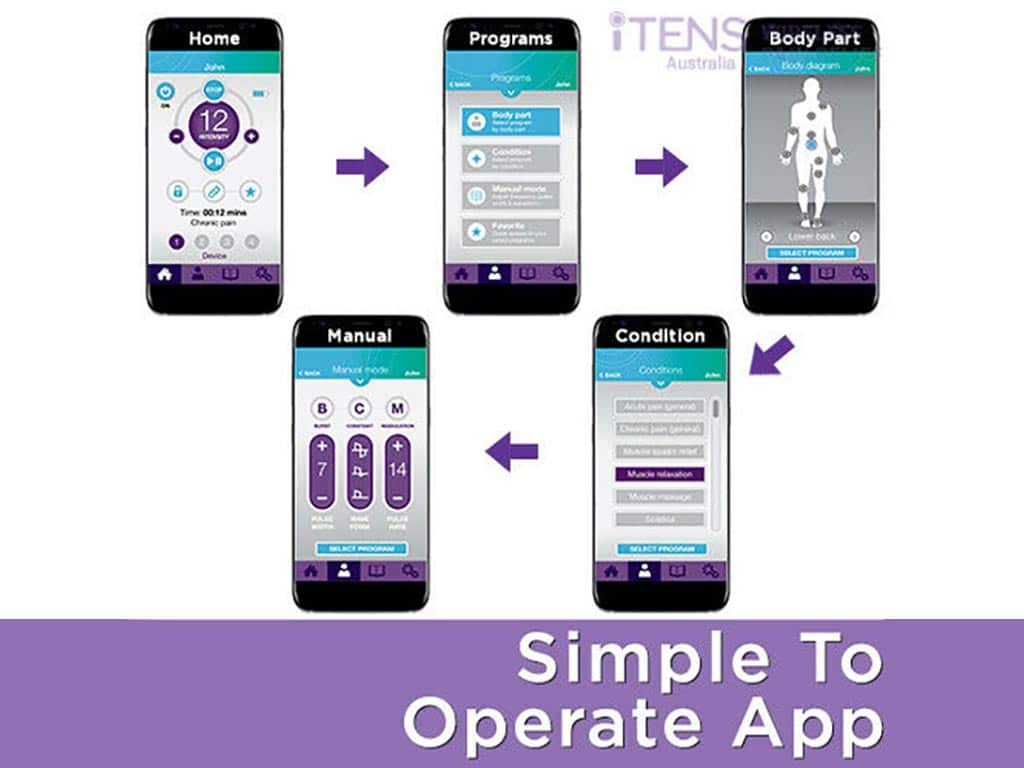
A Transcutaneous Electrical Nerve Stimulation or TENS device for back pain is a medical device that sends electrical impulses to the nerves to alleviate discomfort. This method of pain relief functions in multiple ways to enhance the quality of life of back pain sufferers. The electrical pulses can block the transmission of pain signals from reaching the brain. Additionally, they can prompt the release of endorphins and improve blood flow.
Painful conditions, such as back ailments, are prevalent health concerns. This can have a significant impact on quality of life. Traditional pain management techniques typically involve the use of pain medications and physical therapy. However, they may not always provide long-term relief. TENS is a treatment option that can help manage various types of pain. This article will present a TENS unit for back pain, how it works, and how to operate it.
What is a TENS Device for Back Pain?
Back pain is a prevalent condition that impacts the muscles, bones, and nerves in the back region. The intensity of pain can vary and may have different causes. Nevertheless, back ailment can significantly impact individuals and can reduce the quality of life. Fortunately, TENS devices are effective technology for pain relief.
The TENS device for back pain is a battery-operated device that delivers electrical impulses to the body. It sends electrical currents through electrode pads placed on the skin. Accordingly, medical professionals and pain clinics commonly incorporate TENS into their treatment plans for patients. Also, athletes and individuals may utilise TENS devices as part of their self-pain management routines.
There are two main types of TENS devices available: wired and wireless. Wired TENS units are connected to the electrode pads using lead cables. On the other hand, wireless TENS units are designed to be more portable. They utilise wireless technology, such as Bluetooth. Nevertheless, both types offer various features. This may include adjustable settings and pre-set programs.
Causes of Backaches
- Poor posture: improper posture while sitting, standing, and walking can contribute to back pain. Individuals may also develop injuries from incorrect lifting posture.
- Sciatica: an ailment resulting from injury or pressure to the sciatic nerve. This ache may also extend down to the legs.
- Disc disorders: herniated discs and degenerative disc disease may cause backaches.
- Muscle injuries: this includes strains and sprains from overusing the muscles.
- Arthritis: inflammation of one or more joints. Many types can cause backaches, including spinal arthritis, osteoarthritis, spondylitis, and spondylosis.
- Fibromyalgia: a chronic pain condition that causes widespread musculoskeletal pain, which can also affect the back.

How Does a TENS Device for Back Pain Work?
The TENS device for back pain works by employing several analgesic effects. Foremost, TENS therapy operates on the principle of the Gate Control Theory of Pain. It suggests that non-painful sensory input can inhibit the transmission of pain signals to the brain. The electrical impulses from TENS can stimulate non-painful sensory fibres. Hence, this can effectively “close the gate”, reducing the perception of backaches.
Secondly, the application of electrical stimulation can trigger the production and release of endorphins. These chemicals in the body function as natural painkillers. Endorphins bind to opioid receptors in the brain and spinal cord. This also inhibits the transmission of pain signals and produces a sense of well-being and relief. This natural effect contributes to the reduction of back ailment.
Thirdly, the electrical pulses from TENS can also influence blood circulation in the treatment region. By inducing vasodilation, the device promotes the delivery of oxygen and nutrients to the tissues in the body. This also aids in the removal of metabolic waste products. Nevertheless, this modulation of blood flow supports muscle recovery and promotes relaxation in the back area.
Frequencies and Intensities
Frequency is the measurement of the number of electrical pulses or cycles per second. The typical frequencies in TENS therapy range from 1 to 150 Hz. Lower frequencies, such as 1-5 Hz, are suitable for chronic pain sufferers. Meanwhile, higher frequencies, such as 80-150 Hz, are for acute pain conditions.
Intensity is the strength or power of the electrical currents, measured in milliamps (mA). It influences how deeply the electrical signals penetrate the body. Generally, TENS therapy starts with a low intensity and gradually increases to a comfortable level. Finding the right intensity is essential for maximising the benefits of the therapy.

How to Operate a TENS Device for Back Pain
Operating a TENS device for back pain involves several simple steps. Begin by identifying the area of the back experiencing discomfort. Then, prepare the skin in the treatment region and position the TENS unit pads accordingly. Next, connect the electrodes to the electrical device using lead cables or a smartphone via Bluetooth for wireless devices.
Afterwards, turn on the portable device. This may allow individuals to adjust the treatment parameters. It may include modifying the frequency, intensity, and duration of electrical stimulation. Also, advanced TENS models have pre-set programs where people can easily select specific settings tailored to their medical condition.
Commence the treatment session by activating the medical device to deliver electrical stimulation. Monitor the sensations experienced during stimulation. Ensure that they are tolerable and provide relief without causing discomfort. Generally, the treatment duration may last between 15 to 30 minutes. Once the therapy is complete, turn off the TENS unit and carefully remove the electrodes from the skin.
Pad Placement Guide
Start by locating the area of the back experiencing discomfort. Then, clean and dry the skin over it. Remove oils, lotions, and dirt. This ensures optimal adhesion and conduction of electrical currents. Next, strategically position the electrode pads around the area of discomfort. Generally, for a back ailment, place the pads on either side of the discomfort.
Once the electrodes are in place, firmly press the pads to securely attach them to the skin. Additionally, maintain proper distance between the pads for at least one inch apart. Avoid placing the electrode pads on sensitive areas, such as the spinal cord, broken skin, or open wounds.
Conclusion
In conclusion, a TENS device for back pain can improve the quality of life. By delivering electrical impulses to the body, they activate the gate control mechanism, effectively reducing pain perception. Additionally, they stimulate the release of endorphins, acting as natural painkillers and promoting a sense of well-being. Moreover, TENS therapy improves blood circulation, aiding in muscle recovery and relaxation in the back area. Whether wired or wireless, these devices may provide adjustable settings and pre-set programs.
Operating a TENS unit for back pain involves simple steps. First, find the painful area and prepare the skin. Then, place the electrode pads on both sides of the discomfort. Connect the pads to the device and turn it on. Adjust the settings as needed. Start the treatment, ensuring the sensations are tolerable. Treatments usually last 15 to 30 minutes. When done, turn off the device and remove the pads carefully.







